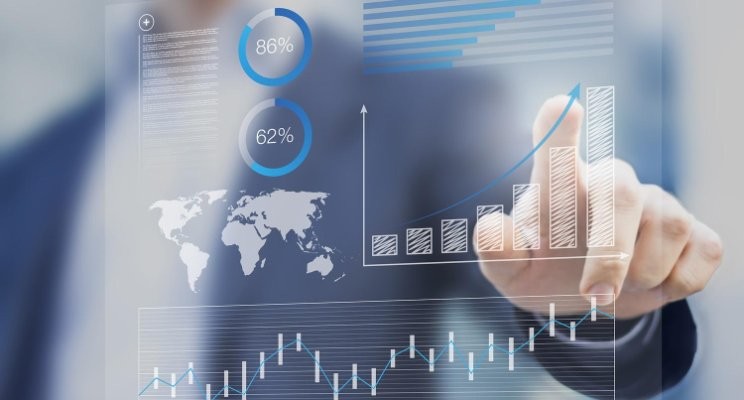In the fast-evolving landscape of procurement, organizations are increasingly turning to data-driven solutions to gain a competitive edge and streamline their operations. Among the array of technological advancements, Procurement Analytics stands out as a powerful tool that not only transforms traditional procurement processes but also plays a pivotal role in strategic decision-making.
What is Procurement Analytics
Procurement analytics involves the use of advanced data analysis tools and techniques to extract meaningful insights from vast datasets related to procurement activities. These activities span the entire procurement lifecycle, from supplier selection and negotiation to contract management and performance monitoring.
Key Advantages of Procurement Analytics
Comprehensive View of Procurement Processes
One of the key advantages of procurement analytics is its ability to provide a comprehensive view of the entire procurement process. By leveraging historical and real-time data, organizations can make informed decisions, optimize costs, and enhance overall efficiency. Let’s explore the transformative power of procurement analytics in detail.
Data-Driven Supplier Selection
In the traditional approach to supplier selection, decisions were often based on historical relationships or gut feelings. Procurement analytics, however, introduces a data-driven dimension to this critical process. By analyzing supplier performance data, organizations can identify high-performing suppliers, negotiate better contracts, and mitigate risks associated with poor supplier performance.
Demand Forecasting and Cost Optimization
Accurate demand forecasting is crucial for procurement planning. Procurement analytics utilizes predictive analytics to forecast demand patterns, allowing organizations to optimize inventory levels and negotiate better pricing with suppliers. This not only reduces carrying costs but also ensures that organizations are well-prepared to meet customer demands.
Performance Monitoring and Risk Mitigation
Effective supplier performance monitoring is a cornerstone of successful procurement. Procurement analytics enables real-time monitoring of supplier performance against predefined key performance indicators (KPIs). This proactive approach helps organizations identify and address potential issues before they escalate, thus mitigating risks associated with supply chain disruptions.
Negotiation Strategies Informed by Data
Negotiating favorable terms with suppliers is an art, but analytics adds a scientific approach to it. By analyzing market trends, benchmarking against industry standards, and considering historical data, organizations can formulate negotiation strategies that result in better deals and improved overall procurement outcomes.
Contract Management Efficiency
Managing contracts can be a complex task, especially in large organizations with numerous suppliers. Procurement analytics simplifies contract management by providing a centralized platform for tracking contract lifecycles, renewals, and compliance. This ensures that organizations remain in compliance with contractual obligations, reducing legal risks.
Real-Time Decision-Making
In a dynamic business environment, the ability to make real-time decisions is a competitive advantage. Procurement analytics empowers organizations with real-time insights into procurement processes. This agility allows for swift responses to market changes, supplier issues, or other external factors that may impact procurement.
Future of Procurement Analytics
The adoption of procurement analytics brings forth a myriad of benefits that extend beyond mere cost savings. In addition to cost savings, organizations embracing this technology experience enhanced efficiency, improved ability to mitigate risks, better strategic decisions based on accurate and timely data, and improved supplier relationships.
Technological Advancements in Procurement Analytics
As technology continues to advance, the future of procurement analytics holds even greater promise. We may see AI algorithms for more advanced predictive analytics, automated data interpretation for quicker decision-making, blockchain integration for enhanced transparency and traceability, and smart contracts to automate and secure procurement processes. Advanced data visualization tools for better insights and interactive dashboards will define our ability to use the latest tech to our advantage.
Embracing the Paradigm Shift in Procurement
Procurement analytics is not just a technological tool; it represents a paradigm shift in how organizations approach procurement. The ability to harness the power of data for strategic decision-making is a hallmark of successful modern businesses. As more organizations recognize the transformative potential of procurement analytics, we can expect a continued evolution in the Procurement landscape, with data-driven efficiency becoming the norm rather than the exception.
One of the most futuristic products that is getting humongous traction among procurement professionals around the globe is ProcurEngine, which has been at the forefront of innovation around procurement analytics, impressing many in this regard.
The journey to fully realizing the benefits of procurement analytics requires a commitment to technology adoption, a data-driven decision-making culture, and continuous learning. As we move forward, those organizations that leverage procurement analytics effectively will not only survive but thrive in an increasingly competitive and dynamic business environment. The revolution is underway, and the future of procurement belongs to those who embrace the power of analytics.
